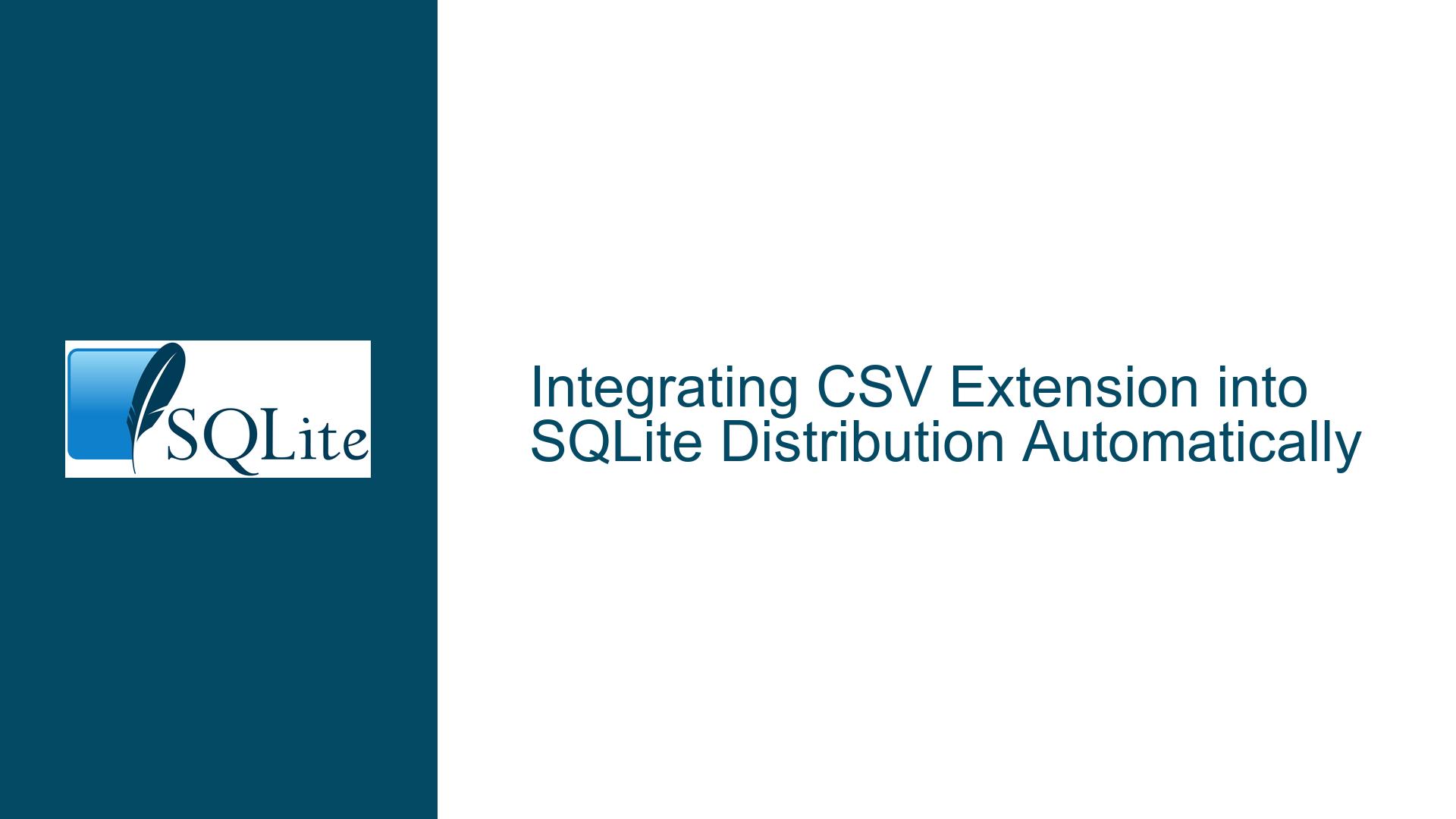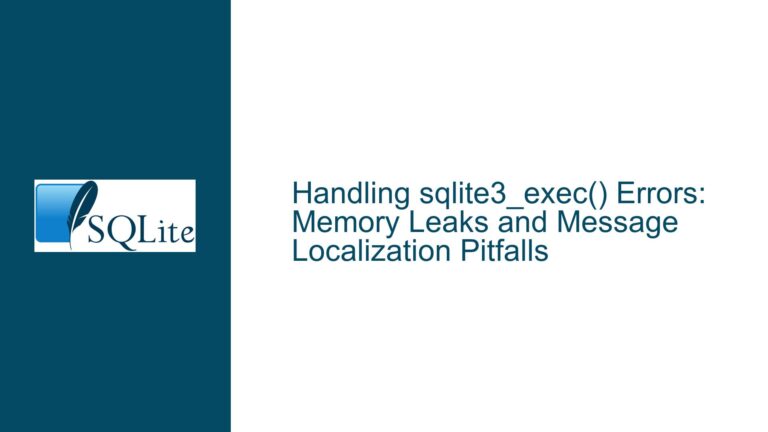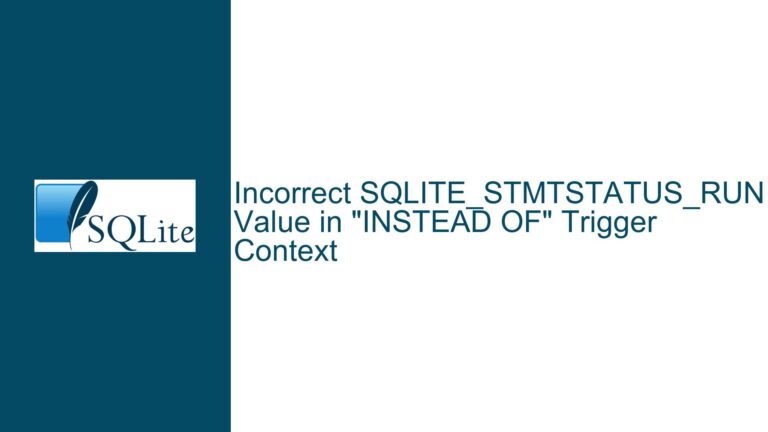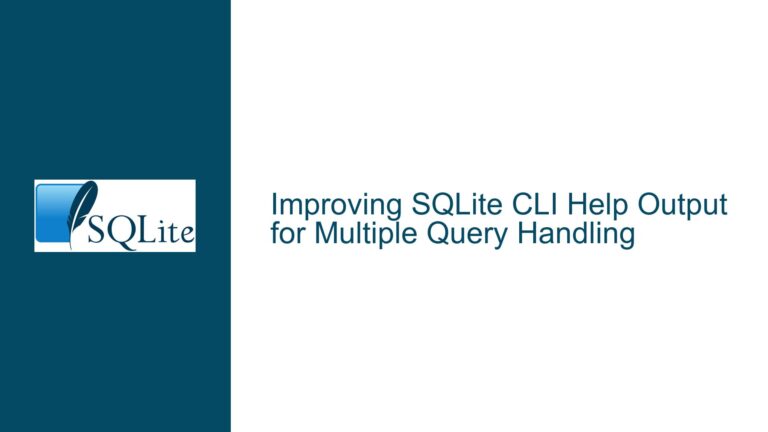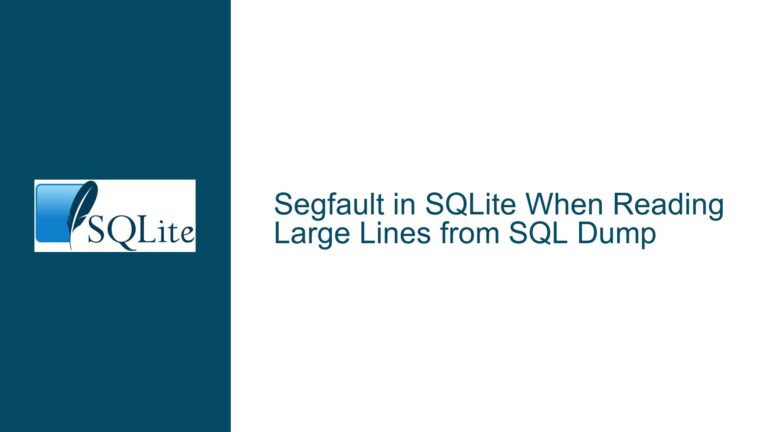Integrating CSV Extension into SQLite Distribution Automatically
Automating CSV Extension Loading in SQLite
SQLite is a powerful, lightweight database engine that supports a wide range of extensions to enhance its functionality. One such extension is the CSV extension, which allows users to import and export data in CSV format directly within SQLite. However, by default, the CSV extension is not automatically loaded when SQLite is invoked. This requires users to manually load the extension using the .load csv command each time they start a new SQLite session. For users who frequently work with CSV data, this manual step can be cumbersome and error-prone. This guide will explore how to automate the loading of the CSV extension into the SQLite distribution, eliminating the need for manual intervention.
The process of automating the CSV extension loading can be approached in several ways. The most straightforward method involves modifying the SQLite startup configuration to automatically load the CSV extension upon invocation. Alternatively, users can modify the SQLite source code to include the CSV extension directly in the SQLite executable. Each approach has its own set of advantages and trade-offs, which will be discussed in detail in the following sections.
Modifying SQLite Startup Configuration
One of the simplest ways to automate the loading of the CSV extension is by leveraging the SQLite CLI shell’s ability to read and interpret a startup configuration file named .sqliterc. This file, if present in the user’s home directory, is automatically executed whenever the SQLite CLI shell is started. By adding the .load csv command to this file, users can ensure that the CSV extension is loaded automatically every time SQLite is invoked.
The .sqliterc file is a plain text file that can contain any valid SQLite commands. To automate the loading of the CSV extension, users can create or edit the .sqliterc file in their home directory and add the following line:
.load csv
Once this line is added to the .sqliterc file, the CSV extension will be automatically loaded every time the SQLite CLI shell is started. This method is particularly useful for users who want to avoid modifying the SQLite source code or rebuilding the SQLite executable.
Another approach to automating the loading of the CSV extension is by using shell aliases. For users who frequently work with the command line, creating an alias that includes the .load csv command can be a convenient way to ensure that the CSV extension is always loaded. For example, in a Bash shell, users can create an alias like the following:
alias sqlite3_loaded='sqlite3 -cmd ".load csv"'
This alias can be added to the user’s shell configuration file (e.g., .bashrc or .bash_profile for Bash users). Once the alias is defined, users can simply type sqlite3_loaded to start SQLite with the CSV extension preloaded. This method is particularly useful for users who want to maintain flexibility in how they invoke SQLite, as they can still use the standard sqlite3 command when the CSV extension is not needed.
Incorporating CSV Extension into SQLite Executable
For users who require a more permanent solution, modifying the SQLite source code to include the CSV extension directly in the SQLite executable is a viable option. This approach involves editing the shell.c file, which is part of the SQLite amalgamation source code, to include the CSV extension code. By doing so, the CSV extension will be compiled directly into the SQLite executable, eliminating the need for any .load operations.
The shell.c file contains the main entry point for the SQLite CLI shell, as well as various utility functions and command-line parsing logic. To incorporate the CSV extension into the SQLite executable, users need to locate the section of the shell.c file where extensions are registered. This is typically done using the sqlite3_auto_extension function, which allows extensions to be automatically loaded when SQLite is initialized.
To include the CSV extension, users can add the following code to the shell.c file:
#include "sqlite3ext.h"
SQLITE_EXTENSION_INIT1
int sqlite3_csv_init(sqlite3 *db, char **pzErrMsg, const sqlite3_api_routines *pApi) {
SQLITE_EXTENSION_INIT2(pApi);
// CSV extension initialization code here
return SQLITE_OK;
}
int main(int argc, char **argv) {
sqlite3_auto_extension((void(*)(void))sqlite3_csv_init);
// Rest of the main function code
}
In this code, the sqlite3_csv_init function is responsible for initializing the CSV extension. The sqlite3_auto_extension function is used to register this initialization function, ensuring that the CSV extension is automatically loaded when SQLite starts. Once this code is added to the shell.c file, users can rebuild the SQLite executable using the standard build process.
Rebuilding SQLite from source requires a C compiler and the SQLite amalgamation source code. The amalgamation is a single C file (sqlite3.c) and a header file (sqlite3.h) that contain the entire SQLite library. To rebuild SQLite with the CSV extension included, users can follow these steps:
- Download the SQLite amalgamation source code from the official SQLite website.
- Extract the source code to a directory on your system.
- Edit the
shell.cfile as described above to include the CSV extension initialization code. - Compile the SQLite executable using a C compiler. For example, on a Unix-like system, the following command can be used:
gcc -o sqlite3 shell.c sqlite3.c -lpthread -ldl
This command compiles the shell.c and sqlite3.c files into a single executable named sqlite3. The -lpthread and -ldl flags are used to link the necessary libraries for threading and dynamic loading, respectively.
Once the SQLite executable is rebuilt, the CSV extension will be automatically loaded every time SQLite is invoked. This method provides a permanent solution for users who require the CSV extension to be always available without any manual intervention.
Troubleshooting Common Issues with CSV Extension Integration
While the methods described above are generally straightforward, users may encounter issues when attempting to automate the loading of the CSV extension. One common issue is the failure of the .sqliterc file to execute properly. This can occur if the file is not located in the correct directory or if it contains syntax errors. To troubleshoot this issue, users should ensure that the .sqliterc file is placed in their home directory and that it contains valid SQLite commands.
Another potential issue is the failure of the CSV extension to load when using a shell alias. This can happen if the alias is not defined correctly or if the shell configuration file is not sourced properly. To resolve this issue, users should verify that the alias is defined correctly in their shell configuration file and that the file is sourced when the shell starts. For example, in a Bash shell, users can add the following line to their .bashrc file to ensure that the alias is defined:
source ~/.bashrc
When modifying the SQLite source code to include the CSV extension, users may encounter compilation errors if the CSV extension initialization code is not added correctly. To troubleshoot this issue, users should carefully review the code added to the shell.c file and ensure that it follows the correct syntax and structure. Additionally, users should ensure that they are using the correct version of the SQLite amalgamation source code, as different versions may have different requirements for extension initialization.
In some cases, users may find that the CSV extension is not functioning as expected after being integrated into the SQLite executable. This can occur if the extension code itself contains bugs or if there are conflicts with other extensions or SQLite features. To troubleshoot this issue, users should test the CSV extension in isolation by loading it manually using the .load csv command and verifying that it works as expected. If the extension works correctly when loaded manually, the issue may be related to the integration process rather than the extension itself.
Conclusion
Automating the loading of the CSV extension in SQLite can significantly enhance the user experience for those who frequently work with CSV data. By modifying the SQLite startup configuration or incorporating the CSV extension directly into the SQLite executable, users can eliminate the need for manual intervention and ensure that the CSV extension is always available when needed. While each approach has its own set of advantages and trade-offs, both methods provide effective solutions for automating the loading of the CSV extension.
For users who prefer a simple and non-invasive solution, modifying the .sqliterc file or using shell aliases is the recommended approach. These methods do not require any changes to the SQLite source code and can be easily implemented by users with minimal technical expertise. On the other hand, for users who require a more permanent and integrated solution, modifying the SQLite source code to include the CSV extension directly in the executable is the best option. This method provides a seamless experience but requires a deeper understanding of the SQLite build process and C programming.
Regardless of the method chosen, users should be aware of potential issues that may arise during the integration process and be prepared to troubleshoot and resolve them as needed. By following the steps outlined in this guide, users can successfully automate the loading of the CSV extension in SQLite and enjoy a more streamlined and efficient workflow.
